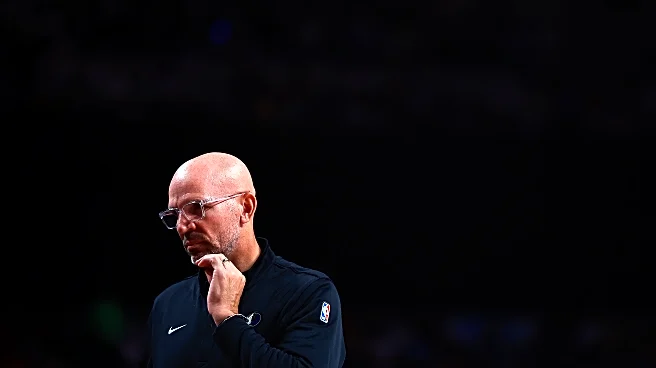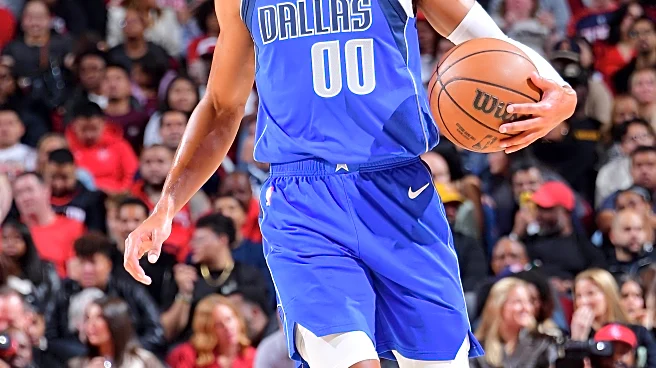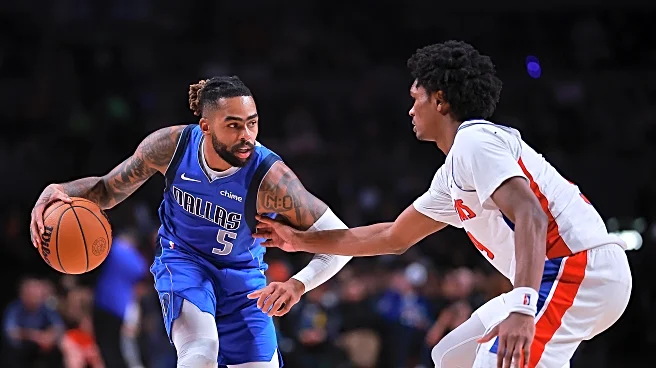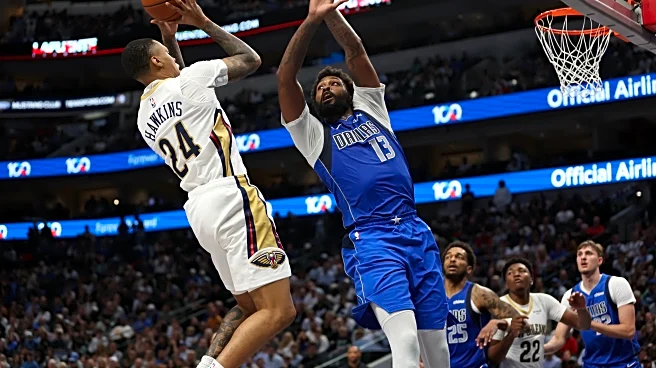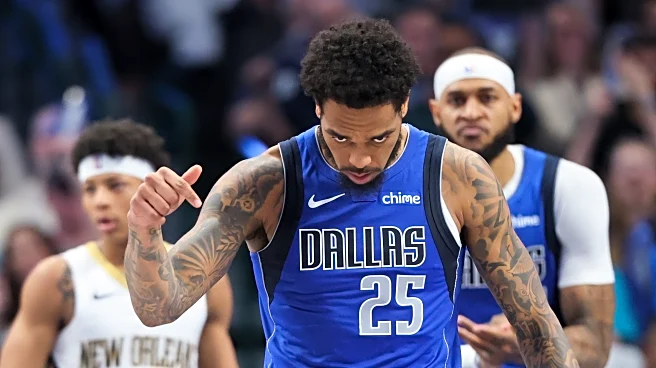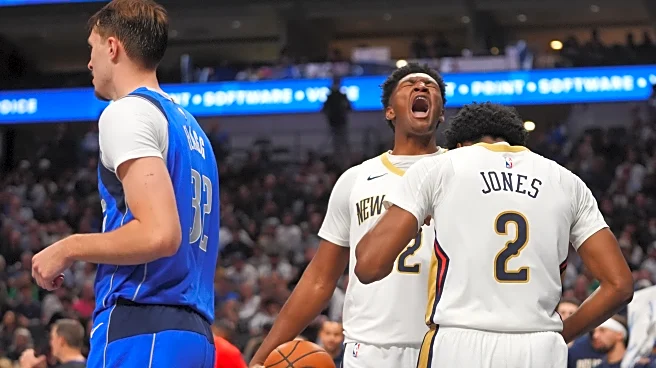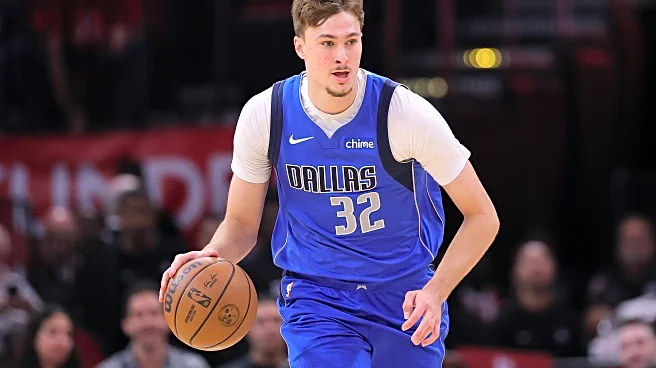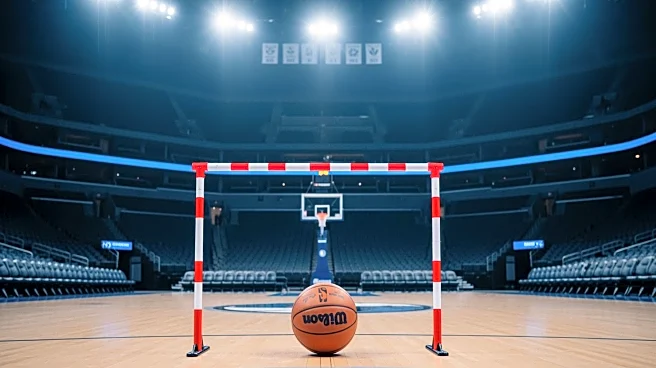In his post-game presser following an embarrassing home loss to the Pelicans, Head Coach Jason Kidd claimed the Dallas Mavericks’ offensive struggles were just “missed open shots”—a cold streak that would soon thaw. But eight games into 2025–26, the numbers and the film agree on something harsher: the Mavericks aren’t just cold. They’re uncreative.
Fast Pace, Futile Offense
Dallas is playing fast—5th in the league in pace—and scoring like the worst team in basketball, ranking dead last (30th) in Offensive Rating through the first
eight games. That combo—high pace, bottom-tier efficiency—doesn’t scream bad luck. It screams a system taking more bad shots, faster.
This is where Kidd’s shield cracks. By shot-location models, the Mavericks’ expected eFG% sits around 54.6% (19th)—already below league average (~56%). Their actual eFG% is 29th. That gap isn’t the signature of a good process betrayed by bad variance. It’s what you get when poor design meets rushed decisions and compromised execution.
If you’re bottom-tier at generating looks and below average at converting the few high-value ones you get, should you admit that in a presser or obfuscate with wishful thinking? Easy to see why Kidd is choosing the latter, what else can you say when the unvarnished truth might lose you the locker room?
Will the Mavericks get better, healthier, luckier? Probably all three. But will it be enough to make the playoffs? It’s tough to squint and see that from this early November vantage point. A return to the lottery seems far more likely.
Roster Construction Is Offense Construction
Injuries matter—but they aren’t an anomaly when you trade for injury history (Anthony Davis), trade for a wing already hurt at the time (Caleb Martin), and re-up a guard (Dante Exum) with a mystery lower-body issue and no timetable. Those choices are roster design, not fate.
The Mavericks made no move to add real advantage creation on the ball. The mid-level swing at D’Angelo Russell was not audacious enough to keep the season afloat until Kyrie Irving’s return. Instead, this front office fell in love with a loaded frontcourt and then acted like an 18-year-old forward could approximate NBA point-of-attack creation by playing him out of position. Maybe that was desperation. Or perhaps it was denial. Either way, the bill comes due on the floor.
When you don’t win at the point of attack, you don’t touch the paint. When you don’t touch the paint, defenses don’t rotate. And when they don’t rotate, your shots stay contested. That’s the story. And the numbers back it up.
Dallas takes ≈18% of its attempts at the rim—30th in the league (league avg ≈33%). They also live near the bottom in Free Throw Rate (~0.15 vs ~0.22 league avg). That’s not variance; that’s a portrait of an offense that rarely stresses the rim.
Ball movement tells the same story. The Mavericks assist on roughly 55% of their makes (bottom five; league ~61%), and their Assist/Turnover ratio sits around 1.4 (30th). The eye test and the data rhyme: a lot of perimeter passing that doesn’t bend the shell, then a late-clock pull-up or a live-ball turnover that turns into a layup the other way. Those are the “catastrophic” giveaways—the kind that happen three or four times per quarter and often turn into opponent fast breaks or back-breaking momentum swings. Picture a blind skip pass against a set defense, or a lazy dribble picked clean at half-court—these are not just empty possessions; they’re immediate points the other way.
Transition has been fine. But you don’t build an NBA offense on transition alone. In the half-court—where most games are won or lost—Dallas is a half-court apocalypse. Their set offense sits around 0.91 points per play (28th) against a league baseline near 0.97.
When your half-court diet is “no paint, few passes, contested jumpers,” you don’t need a cold spell to be bad. You’re baked in.
Pick a Path
Cooper Flagg has been poised and competitive. Against the Pelicans, he turned in his best performance of the season: 17 points, 5 rebounds, 5 assists, 3 blocks, and a steal on 6-of-11 shooting with just one turnover. He had the ball in his hands on the final possession and made the right read—he’s growing, not flailing. He’s also 18 and a natural forward. Expecting him to be your primary initiator and offensive engine, while also learning the NBA on the fly, is mismanagement disguised as development.
If this year is about Cooper’s growth, then say it and build for it—because the real issue right now is organizational indecision. Straddling the line between a win-now mandate and a youth-focused rebuild is what’s truly gutting this roster. Pick a direction and commit. Anything else feeds the confusion on the court. Trade the veterans, stock the cupboard with spacing, slashing, and development reps, and let the record be what it is.
But if this is still supposed to be about winning now, then the data—and the film—say Dallas built a team that can’t create, can’t connect, and can’t compete in the half-court.
Bottom Line
- Pace: 5th
- Offensive Rating: 30th
- eFG%: 29th | x-eFG%: 19th
- At-rim frequency: ~18% (30th) | FTr: ~0.15 (bottom tier)
- AST%: ~55% (bottom-five) | A/T ratio: ~1.4 (30th)
- Half-court PPP: ~0.91 (28th)
That’s not shot variance. That’s systemic. The Mavericks don’t generate enough good shots, don’t finish the ones they do, and don’t value possessions enough to survive the margin. Tempo and ineptitude are the calling cards of this offense, and it beckons the Benny Hill theme several times a game.
Fans were told this roster was a contender—built to win now, not later. But the blueprint is broken. And every loss, every clanked jumper, every empty possession is a receipt stapled to a front office that made a franchise-altering bet that lost before it was placed.
Defense wins championships, but offense buys you a ticket to the dance.
